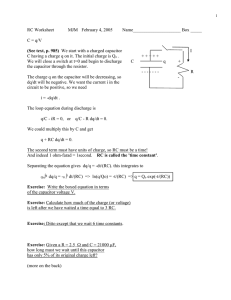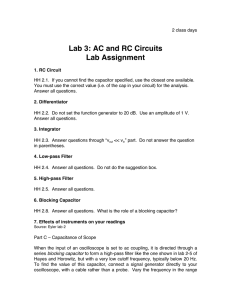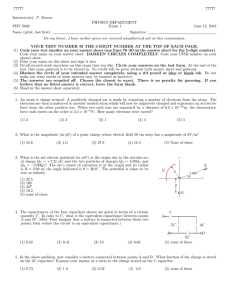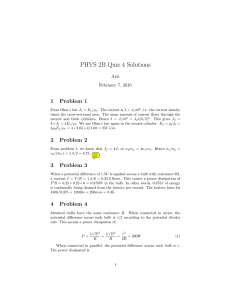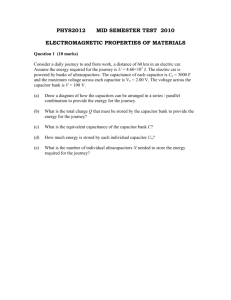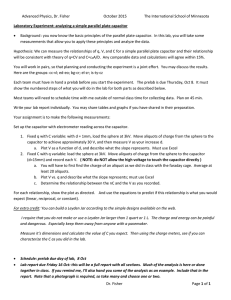Modelling decay of charge
advertisement
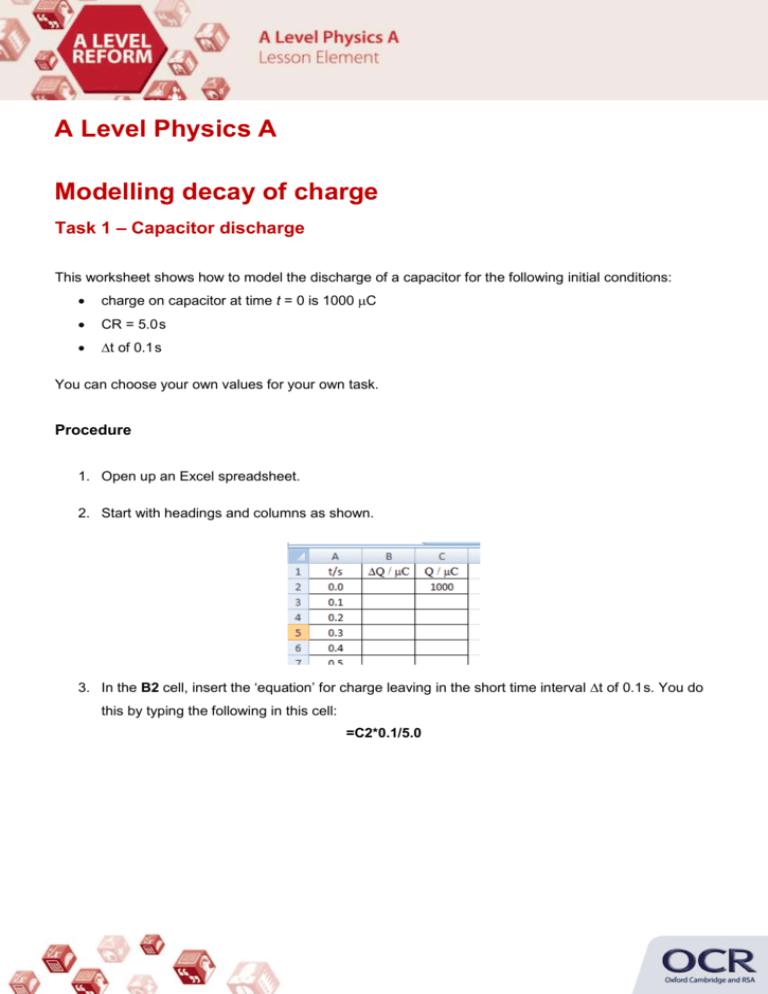
A Level Physics A Modelling decay of charge Task 1 – Capacitor discharge This worksheet shows how to model the discharge of a capacitor for the following initial conditions: charge on capacitor at time t = 0 is 1000 C CR = 5.0 s t of 0.1 s You can choose your own values for your own task. Procedure 1. Open up an Excel spreadsheet. 2. Start with headings and columns as shown. 3. In the B2 cell, insert the ‘equation’ for charge leaving in the short time interval t of 0.1 s. You do this by typing the following in this cell: =C2*0.1/5.0 This will give the following results: 4. Now in the C3 cell, insert the charge left on the capacitor after an interval of 0.1 s. You do this by typing the following in this cell: =C2-B2 This will give the following results: 5. Just two more steps now and you will have all the values you require for your task. Click on the B2 cell and then drag the bottom right hand side corner all the way down the B column. This will copy the equation in all the B cells. Carry out the same procedure with the C3 cell and the C column. If all goes well, you will end up with the following: 6. Use your table to plot a graph of Q against t. 7. If possible, try different values for the time constant and observe what happens to the results in the table and to the Q-t graph. (See the list below of the things you could try.) 8. The charge on the capacitor decays exponentially. How can you use the table of results or your graph to confirm this? 9. The charge Q on the capacitor after a time t is given by the equation Q = Q0 e t CR , where Q0 is the initial charge and CR is the time constant. Do you results agree with this equation? Things to try: Investigate the discharge of a capacitor for a total time of about 10.0 s with initial charge = 1000 C, CR = 5.0 s and t = 0.1 s with initial charge = 2000 C, CR = 5.0 s and t = 0.1 s with initial charge = 1000 C, CR = 10.0 s and t = 0.1 s with initial charge = 1000 C, CR = 2.5 s and t = 0.1 s with initial charge = 1000 C, CR = 5.0 s from t = 0 to t = 6.0 s and CR = 1.0 s for t > 6.0 s and t of 0.1 s
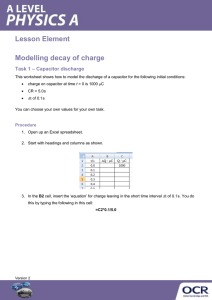
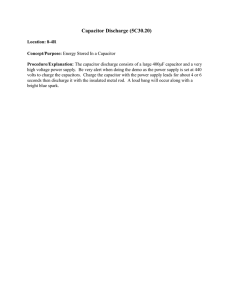
![Sample_hold[1]](http://s2.studylib.net/store/data/005360237_1-66a09447be9ffd6ace4f3f67c2fef5c7-300x300.png)


